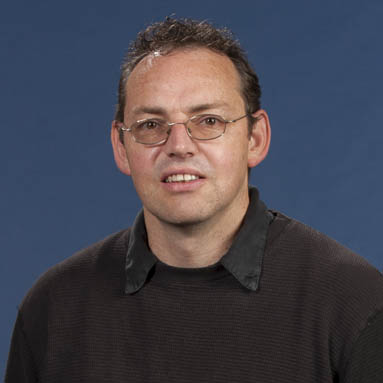A team of researchers at Worcester Polytechnic Institute (WPI) received a nearly $2 million grant from the U.S. Department of Energy (DOE) to create renewable fuel from sewage sludge, a byproduct of wastewater treatment that creates greenhouse gases and water pollution when dumped into landfills. With the U.S. EPA reporting that Americans alone are putting more than 2 billion pounds of sewage sludge into landfills every year, researchers see an opportunity to keep much of that sludge out of landfills and use it to create energy, power the wastewater treatment process, and potentially supplement municipalities’ power grids.
Michael Timko, associate professor of chemical engineering and principal investigator on the three-year grant, is leading a team to develop an on-site operation that uses hydrothermal processes, high temperatures and pressure, and inexpensive catalysts to turn sewage sludge—and the energy and carbon contained in it—into natural gas. Since the the DOE reports that the energy in wastewater entering treatment facilities is five times greater than the energy needed to treat it, recovering that trapped energy on-site will enable treatment plants to replace or supplement purchased energy sources. In addition, nitrates and phosphates extracted during the new process can be used in agriculture.

This research project is Timko’s latest effort to turn waste into fuel. Over the last three years, he has garnered more than $5 million for related research—all focused on lessening dependence on environmentally harmful fossil fuels, fighting climate change and creating renewable energy.
“We’re taking something that is a huge energy consumer and turning it into an energy producer,” Timko said of the new project. “And at the same time, we’re taking a problematic waste and turning it into something useful and valuable. Making wastewater treatment an energy-producing process is a win on multiple levels. And if we can keep this continuous flow of waste from going into landfills, that’s just a huge win.”
The DOE is highly invested in increasing wastewater treatment facilities’ energy efficiency— ultimately making them energy neutral—and environmental performance. Across the U.S., municipal wastewater treatment plants are estimated to consume more than 30 terawatt hours per year of electricity, which equals about $2 billion in annual electric costs. Electricity alone can constitute 25% to 40% of a wastewater treatment plant’s annual operating budget and make up a significant portion of a given municipality’s total energy bill, according to the DOE. As the population grows, these bills will rise along with it.
The WPI work is among 16 water infrastructure projects recently awarded a total of $27.5 million by the DOE. “By modernizing our water infrastructure, we can reduce electricity demand and turn water utilities into clean energy producers,” said Secretary of Energy Jennifer M. Granholm. “The next-generation innovations DOE is investing in will also lower costs while increasing access to clean water for Americans, and drive us toward a cleaner, healthier, more prosperous future.”
To turn the sludge into natural gas, Timko is designing an advanced hydrothermal gasification process, which heats the water in the sludge to a supercritical stage between water and a gas, enabling the raw material to be turned into biofuel.
Converting the sludge into a renewable energy requires several steps, and Timko is partnering with three other WPI professors on different technologies and methods important to create this new process.
He is collaborating with Geoffrey Tompsett, WPI assistant research professor in Chemical Engineering to study hydrothermal liquefaction, which is another thermal process used to

convert the sludge into a crude oil–like liquid—the first step in converting the sludge into a usable gas.
Timko also is working with Andrew Teixeira, assistant professor of Chemical Engineering, who is focused on designing a supercritical salt precipitation process that uses high-temperatures and high-pressure steam to recover nitrates, sulfates, and phosphates from the sewage sludge, which is part of the process of turning the raw material into a biofuel. These minerals can then be recycled into products like commercial fertilizers.
In addition, Nick Kazantzis, professor of Chemical Engineering, is simulating the economic and environmental performance of the process, a critical step to proving the commercial viability of the technology and for guiding research and development efforts.
“Environmentally, this process is one step toward reducing our carbon footprint by closing the carbon cycle in a zero-waste approach to sustainability,” said Teixeira. “The impact on our environment is potentially huge. Imagine if we could establish a sustainable process that is no longer adding carbon to the atmosphere, but rather captures it before it escapes and converts it into something useful.”
Another collaborator on the research project, Harold Walker, WPI’s Alena and David M. Schwaber Professor of Environmental Engineering, and a researcher experienced in developing treatment technology for wastewater and drinking water, will focus on ensuring the technology being developed works within conventional wastewater treatment facilities.

“Turning a waste material like sludge into a valuable resource has so many environmental benefits, from reducing greenhouse gas emissions to reducing water pollution and soil contamination,” said Walker. “If successful on a large scale, this new approach could dramatically increase the recovery of energy at wastewater treatment facilities all over the world and bring us a lot closer to net energy neutral wastewater treatment.”
Researchers at Pacific Northwest National Laboratory, one of the DOE’s national laboratories, are collaborators on the project, running a pilot test of the technologies being developed. Also collaborating are researchers at Syracuse University, who are working on developing the gasification reactor and catalyst; and researchers at the American Institute of Chemical Engineers, who will work on commercialization of the overall process.








